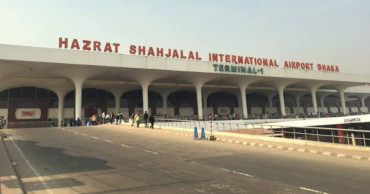Construction
Is There Any Alternative to Brick Kilns?
For centuries, brick kilns, characterised by fiery chimneys and billowing smoke, have played a key role in the construction industry. Despite their contribution in providing essential building materials, their operations entail harmful impacts on human health, biodiversity and environment.
What is a Brick Kiln?
A brick kiln is a specialised facility used in the production of bricks, fundamental building blocks for construction. These kilns play a vital role in shaping the urban landscape. The process involves heating clay or other materials in furnaces to create bricks and contributes to the growth of infrastructure. However, the traditional methods employed in brick kilns can have environmental and health consequences, making it imperative to explore sustainable alternatives and technologies.
Impacts of Brick Kiln on Health
Particulate Matter Emissions
Brick kilns pose a major health risk due to the emission of particulate matter, including pollutants like sulfur dioxide and nitrogen oxides. Inhaling these pollutants can irritate the lungs, leading to coughing, wheezing, and shortness of breath. Prolonged exposure may contribute to chronic obstructive pulmonary disease (COPD).
Read more: 9 illegal brick kilns shut down, fined Tk 47 lakh in Sirajganj
Respiratory Issues
Prolonged exposure to emissions from brick kilns can lead to a range of respiratory problems. From workers within the kilns to residents in nearby communities, the inhalation of pollutants can result in asthma, bronchitis, and other respiratory ailments.
Occupational Health Risks
Workers directly involved in brick kiln operations face occupational health risks due to exposure to high temperatures, dust, and pollutants. Adequate safety measures and protective equipment are crucial to mitigating these risks.
Cardiovascular Problems
Brick kiln fumes, laden with pollutants, can obstruct arteries, elevate blood pressure, and disturb heart rhythms. These adverse effects heighten the likelihood of heart attack, stroke, and heart failure, underlining the severe cardiovascular risks associated with exposure.
Read more: 4 brick kilns shut down for polluting air in South Keraniganj
Skin Problems
Dust and irritants emanating from brick kilns inflict skin torment on workers, causing rashes, itching, and burns. The daily grind leaves exposed skin raw, rendering workers vulnerable and uncomfortable in their work environment.
Cancer
Inhaling brick kiln fumes conceal invisible dangers, harbouring carcinogens that escalate cancer risks over time. Exposed workers face heightened threats of lung, skin, and other cancers, emphasising the risks associated with prolonged exposure.
1 year ago
Ecnec clears 12 projects, including one to raise cost of Padma Bridge construction
The Executive Committee of National Economic Council (Ecnec) on Tuesday approved a total of 12 development projects including a revised one to raise the cost of the Padma Multipurpose Bridge Construction by Tk 2412.13 crore and extend the timeframe till June 2024.
The overall estimated cost of the 12 projects is Tk 19,598.84 crore. Only additional costs of four revised projects were counted here.
The approval came from the Ecnec meeting chaired by its chairperson and Prime Minister Sheikh Hasina at the NEC conference room in the city’s Sher-e Banglanagar area.
“A total of 15 projects were placed before today's meeting. Of them, 12 projects got approval and two were deferred. And the rest one got time extension only,” said Planning Minister MA Mannan while briefing reporters.
Of the 12 approved projects, eight are new and the rest four are revised ones.
Among the total estimated cost, Tk 13,203.66 crore will come from the foreign sources as project assistance, while Tk 6,260.72 crore from the GoB fund and the rest Tk 134.46 crore from the fund of an organisation concerned, said the Planning Secretary Satyajit Karmaker.
Regarding the reasons behind the rise of cost of Padma Multipurpose Bridge Construction Project, member of Physical Infrastructure Division of the Planning Commission Dr Mohammad Emdad Ullah Mian said the VAT rate has risen to 15 percent now from 10 percent as well as the prices of construction materials for river trainings and the price of dollar went up.
As per the project factsheet, the main work of Padma Bridge project has already been completed. But now the revision of the project is required to complete the remaining ancillary works and the payment of contractors’ dues. So, the project can be approved under this consideration, he said.
In terms of cost, the largest three new projects approved in the Ecnec meeting are “Programme on Agricultural and Rural Transformation for Nutrition, Entrepreneurship and Resilience in Bangladesh Project,” involving an estimated cost of Tk 6,910.94 crore; “Bangladesh Road Safety Project” with Tk 4,988.14 crore; and “Collection of 2 Crude Oil Mother Tankers and 2 Mother Bulk Carrier Ships on the basis of G2G Project” with Tk 2,620.77 crore.
The agricultural (PARTNER) project will be implemented in all the unions of 495 upazilas of the country’s 64 districts by June 2028, mainly for transformation of the traditional agricultural system into commercial agriculture and diversification in the food grains production.
Other major objectives of the project are development of agricultural entrepreneurs for the export of agricultural products and expansion of climate resilient agro-food value-chains.
Also Read: Tk 4323-crore project to improve disaster preparedness, 7 others get Ecnec nod
The Bangladesh Road Safety project will be implemented in all the upazilas of the country by June 2028 in a bid to reduce road accidents and damages as well as enhance the capacity of government agencies concerned for ensuring road safety.
The other new projects are “Improving Computer and Software Engineering Tertiary Education Project (ICSETEP)” involving Tk 1,219.80 crore; "Project for Protection of Charkaua, Chandmari, Jagua, Lamchari and Charmonai Areas in Sadar Upazila of Barisal District from Kirtankhola River Erosion (Phase-1) with Tk 512.92 crore; “Establishment of Institute of Nanotechnology (in Savar) Project” with Tk 380.78 crore; ‘’Building Climate Resilient Livelihoods in the Vulnerable Landscapes in Bangladesh (BCRL) Project” with Tk 76.06 crore; and “Safer Cyberspace for Digital Bangladesh: Enhancing National & Regional Digital Investigation Capability of Bangladesh Police Project” with Tk 59.08 crore.
The three other revised projects are “Construction of Dhaka-Narayanganj dual gauge railway line in parallel to the existing meter gauge railway line (1st revised) Project” with additional cost of Tk 279.69 crore (now cost is Tk 658.35 crore); “Reconstruction of Mymensingh Central Jail (1st revised) Project” with extra cost of Tk 112.54 crore (now the total cost increased to Tk 240.15 crore); and “Reinstallation and Improvement of Level Crossing Gates of the Eastern Region of Bangladesh Railway (3rd revised) Project” with additional cost of Tk 25.99 crore ( now cost is Tk 130.50 crore).
In the Ecnec meeting, the Prime Minister directed the authorities concerned to ensure the facilities in the country’s jails to run the virtual court.
She made this directive during the discussion about the first revision of Reconstruction of Mymensingh Central Jail Project.
2 years ago
Turkey Earthquake: Why Did So Many Buildings Collapse?
Two major earthquakes of magnitude 7.8 and later 7.5 killed thousands of people in southern Turkey and northern Syria, destroying almost all buildings to the ground. The published photos and videos are shocking. While a huge number of buildings collapsed in Turkey, other similar buildings remain standing. The collapsed buildings include the newly built apartment blocks too, which were earthquake-proof.
However, according to the building code, all structures should maintain construction standards. That being said, either all of the structures should collapse, or all of them should remain standing.
But why were some buildings affected and some neighboring buildings did not face any problems? This occurrence raised questions about the maintenance of building safety standards and triggers corruption. Let’s find out the reasons why so many buildings collapsed in Turkey's earthquake.
Read More: Earthquake Safety: Do’s and Don’ts during an Earthquake
What Experts Say
Earthquake engineers at the University of Buffalo suggest that behind the seemingly random occurrence of collapses, there are likely some underlying causes.
Extreme shaking from earthquakes like the Feb. 6, magnitude 7.8, and magnitude 7.5 can lead to a building's collapse. This is due to various factors, including shaking intensity and duration, building design and detailing, construction quality, construction documents, soil conditions, construction oversight, and structural modifications. Andrew Whittaker, SUNY Distinguished Professor in the Department of Civil, Structural, and Environmental Engineering, explains these contributing elements.
In the United States, modern reinforced concrete buildings are designed to tolerate damage in the event of severe earthquake shaking and will not collapse. This same philosophy has been adopted in many other countries, and Turkey is not an exception. Nonetheless, these buildings may still collapse if the construction quality is poor, design errors have been made, the shaking is more intense than expected, or a combination of these factors has been present.
These brought up so many questions, and the BBC started investigating to find out the answer.
Read More: Post-Earthquake Cautions: Do’s & Don’ts
2 years ago
JS passes Highways Bill to ensure better management, construction of highways
The Highways Bill, 2021 was passed in Parliament on Saturday, aiming to have a full-fledged law replacing the century-old one.
Road Transport and Bridges Minister Obaidul Quader moved the Bill and it was passed by voice vote.
There is a law of 1925 (Highways Act, 1925), having only five clauses, which are inadequate to deal with maintenance, management and construction (of highways).
The provisions of punishment have also been kept in the case of violation of the proposed law. The punishment will be a maximum two years’ jail or Tk 5,000-Tk 5 lakh fine.
As per the Bill, the government will decide which vehicles will run on which roads or highways, which will be declared as expressway along with highways. How these will be operated and from which roads toll will be collected.
READ: Rowshan Ara made head of JS committee on Road Transport Ministry
As per the Bill, the government or any individual given responsibility by the government will develop the highways, repair or maintain those, highways related sewerage system and construct drains, culverts and bridges.
It said that after paying the fixed charges of the government, semi government and private service providers can set up their utility connections.
It said that on the highways there will be no scope to keep crops or something others for drying up those.
The Bill stated that without taking prior permission no billboard, signboard, gate or like this will be set up on the highways.
READ: Rangpur & Rajshahi may see drizzle in next 24 hours
Slow speed vehicles have to use the specific lanes, it said.
The bill mentioned about taking steps to set up specific and safe places for people with disability, children and elderly persons.
4 years ago
8th anniversary of Rana Plaza tragedy Saturday
Dhaka, Apr 24 (UNB) - The 8th anniversary of the Rana Plaza collapse, the worst-ever tragedy in the country’s multi-billion-dollar ready-made garment (RMG) industry, is being observed on Saturday amid the coronavirus pandemic.
This year, there will be no outdoor programmes to recall the victims due to the outbreak of coronavirus.
Read Why Rana Plaza owner’s bail shouldn’t be stayed, asks HC
Different right bodies, worker organisations and left-leaning political parties, including Rana Plaza Survivors’ Association, usually arrange various programmes every year, remembering the tragedy.
On April 24, 2013, Rana Plaza, an illegally-constructed building in Savar which housed five garment factories, came down crashing, killing 1,138 people and injuring over 2,000 others.
According to the survey conducted by ActionAid Bangladesh, the physical health condition of 14 percent of survivors is getting worse.
Also read: 57pc Rana Plaza survivors remain unemployed: Survey
Among them, 58.5 percent are more or less stable, and 27.5 percent are completely stable. Most of the 14 percent survivors reported that they are still bearing a headache, pain in hand and leg and back pain.
In terms of psychosocial health, 12.5 percent are still in trauma in comparison to 10.5 percent survivors last year. Currently, 62 percent reported that they are more or less stable, and 25.5 percent have recovered fully compared to 21 percent last year.
A total of 4.5 percent more survivors have improved their mental health than last year.
Also read: HC issues rule on why Rana Plaza owner should not get bail
These findings were disclosed in a virtual dialogue titled ‘COVID-19: Challenges for the Rana Plaza Tragedy Survivors’ on April 22 organised by ActionAid Bangladesh in memory of the 8th year of Rana Plaza tragedy.
The survey was conducted among 200 survivors of the Rana Plaza collapse.
4 years ago
TSC Renovation: How will the new look be?
The Teacher-Student Centre, popularly known as TSC on the Dhaka University (DU) campus, was established in 1961. It is set to be renovated keeping its old structure as part of the university’s birth centenary celebrations in 2021.
The University authority primarily approved the new design provided by The Public Works Department (PWD) of the government but the construction work will start after Prime Minister’s approval. Before that, PWD proposed to rebuild TSC entirely, which sparked debate and anger among students, teachers and alumni.
Later, the authorities instructed PWD to form a new design keeping its old structure. After several meetings, both stakeholders signed off on the new design.
Also read: TSC reconstruction: DU authorities seek opinion from teachers, students
Prime Minister Sheikh Hasina on September 2 last year said a plan to modernize Dhaka Medical College Hospital (DMCH), TSC and Shahbagh’s Public Library. "Dhaka University is our university and we want to build TSC in a modern way," said the PM on that day.
She also said that she had already directed the authorities concerned to prepare its design in a proper manner.
What will the new TSC complex look like?
According to the new draft design, TSC’s present structure will not be demolished. A 10-storied new building will be constructed where the swimming pool is now located.
“The new facility will be built and incorporated with the existing structure. It will include rehearsal rooms for cultural activities, rooms with modern facilities for TSC-based socio-cultural groups, indoor games room, separate cafeteria, two auditorium, gymnasium, teachers’ lounge, two basements for vehicle parking, and more,” said Acting Director Syed Ali Akbar.
Read 5-storey building tilts in Chattogram: Residents evacuated
He said the entrance of the new building would be from the west of TSC. The construction work will be started from the back where now the swimming pool is situated.
“Our engineering section is not involved with the designing or construction work, moreover the PWD will do as per the prime minister’s instruction,” he continued.
Mir Manzurur Rahman, Chief Architect, Department of Architecture, Ministry of Housing and Public Works, said, “We did a draft design following DU’s requisition. We cover almost all of the requisition including two auditoriums, a lecture theater, a gymnasium and some office space and others. We insert these requisitions into 10 storied building and Dhaka University is happy with our design.”
“Old existing structures will not be rebuilt. We will just renovate existing structures as per necessity,” he added.
The TSC director provided a requisition list to the university's engineering department, which was subsequently submitted to PWD on October 18 last year by the DU authorities.
The acting chief engineer of DU Abul Kalam Sikder said, “PWD will provide the new design to the prime minister and if she approves the design, they will start construction work."
DU pro vice-chancellor (administration) Prof Muhammad Samad said, “This design is acceptable. It will be handed over to prime minister though PWD and final work will start if the PM approves the design.”
Prof Samad hoped that construction work would begin soon under the direct concern of the prime minister.
Also read: Bangabandhu’s historic photo kept at TSC
Mohiuddin Mahi, a third-year student of Mass Communication and Journalism said, TSC is the social and cultural hub of our campus which was built when the varsity had a small number of students.
“However, it has never been reconstructed again although the number of students and teachers has been increasing every year. So, this is a great initiative indeed but the authorities have to be sincere enough so that none of its tradition or aesthetic beauties get destroyed,” he added.
Echoing Mahi, Salman Siddique, president of Socialist students’ front said, "Yes, there is a need to improve some aspects of TSC. We do not oppose modernization of TSC either. But authority have to be more sincere so that none of tradition and beauties get destroyed.”
But there are lots of problems including accommodation crisis authority should pay heed first, he said.
Read Construction work on Dhaka airport’s new terminal likely to begin in Dec
TSC at a glimpse
The TSC is an invaluable part of Bangladesh’s cultural heritage and among the modern architectural landmarks of the country.
The Greek legendary architect, planner and theoretician Constantinos Apostolos Doxiadis (1913-1975) designed TSC during the early 1960s and later the TSC building was built as part of the so-called Decade of Development (between 1958 and 1968) of the then Pakistani regime.
The structure exemplifies a modernist architectural sensitivity toward spatial needs for tropical climatic conditions. It blends local parameters of space-making -- particularly the indoor-outdoor continuum and generation of space around courtyards -- with international-style visual expression of building forms.
TSC's dome-shaped structure is considered an iconic landmark in Dhaka city. It has been home to countless students who show up between or after classes for a cup of tea with friends, and holds immense nostalgic value for them on top of being a historically significant site.
There were several attempts to renovate the structure earlier, but they were stopped subsequently. One of them was to demolish the swimming pool next to the TSC and build a nine-storey building. The initiative of renovation by keeping the original structure intact, however, did not see the light of day.
Read PM orders proper renovation of shabby rail bridges
4 years ago
Serious problems exist in construction, renovation of collapsed hotel in east China
Serious problems existed in the construction and renovation of a hotel that collapsed in eastern China's Fujian Province, according to an investigation team of the State Council, China's cabinet.
5 years ago
Construction work on Dhaka airport’s new terminal likely to begin in Dec
Construction work on the third terminal of Hazrat Shahjalal International Airport (HSIA) is likely to begin in late December after months of delay.
6 years ago




.jpg)
.jpg)
.png)





